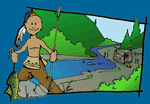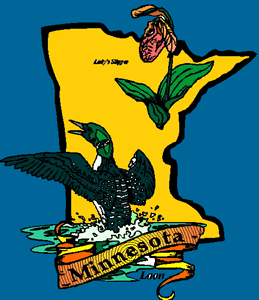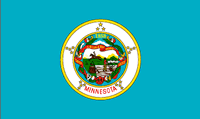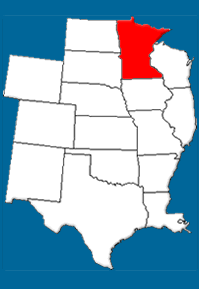Bob Dylan
Bob Dylan was born Robert Zimmerman in Duluth, Minnesota, the grandson of Jewish-Russian immigrants. He grew up in Hibbing, Minnesota, and became fascinated with the early rock and roll and folk music scene. His high school yearbook shows his goal in life was "to join Little Richard." He moved to New York's Greenwich Village and began performing and composing music, and is generally recognized as one of the founders of rock and roll. His son, Jakob, is now a popular musician.
Sinclair Lewis
Born in Sauk Centre, Minnesota, Sinclair Lewis was the first American to win the Nobel Prize in Literature. Lewis wrote novels that satirized middle class life in the 1920s, including Main Street and Babbitt. He also satirized the medical profession in his novel Arrowsmith, and religious revivals in Elmer Gantry.
Walter Mondale
Walter Mondale was born in Ceylon (now called Sri Lanka), and became the 42nd Vice President of the United States. He began his career by practicing law in Minneapolis, and became active in Democratic politics. He was appointed state attorney general in 1960. He was appointed to a seat in the US Senate in 1964 when Hubert Humphrey was elected Vice President. Jimmy Carter chose Mondale as his running mate in the Presidential campaign of 1976. In 1984, he ran unsuccessfully for President himself.
Charles Schulz
Charles Schultz was born in Minneapolis, Minnesota. After seeing a "Do You Like to Draw?" advertisement, he decided to take a correspondence course in art. After serving in World War II, he began drawing a church cartoon. In 1950, he began drawing his comic strip, "Peanuts," which would become the most popular comic strip in history. His characters, including Charlie Brown, Snoopy and Lucy, were world famous, and inspired such well known phrases as, "Good Grief," "Security Blanket," and "Happiness is a Warm Puppy." His television special, A Charlie Brown Christmas, has aired every year since 1965.
Jesse Ventura
Jesse Ventura was born John Janos in 1941 in South Minneapolis, Minnesota. After high school, he joined the Navy and became a SEAL and served in Vietnam. After leaving the military, he began a successful pro wrestling career using the nick name Jesse "The Body" Ventura, and then starred in films. In 1998, he shocked the political establishment by defeating Hubert H. Humphrey III in the race for Minnesota governor, and is the only Reform Party candidate to hold the position of governor.









